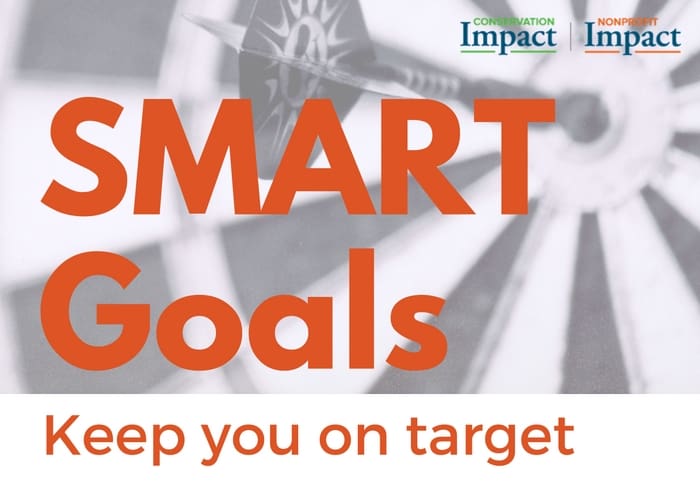
Be SMART to Get Where You Want to Go
If you don’t know where you’re going it’s not only hard to get there, it’s nearly impossible to know when (or if) you’ve arrived. When you boil it down, there are really two kinds of organizations – those that achieve mission-related goals and those that are always hoping for more.
The same can be said for our personal lives. If I say, “I want to go to the mountains this weekend,” that’s a realistic possibility since I live in Colorado. But what counts as a mountain? Do I want to do anything interesting once I’m there? Am I going to go there and turn around and go home or stay overnight?
How much easier would it be if I said, “I want to go to Summit County for a five-mile hike with my dog on Saturday”? Planning would be much easier, wouldn’t it? I would know how much money to set aside (budget is clear). I would know what sort of infrastructure and systems I need to achieve my goal (dog, car, hiking boots, map). And I would be able to look back on the experience and make better choices for future hikes (i.e., don’t wear brand new boots on a 5-mile hike next time!).
It’s the same idea for our organizations. Do we want hope it all turns out okay? Or do we want to have a specific goal so we can plan effectively, ensure we have the resources we need to tackle it, and be able to tell if we reach it successfully?
SMART Goals
Setting and aligning your operation to accomplish SMART goals can make a big difference in organizational planning and effectiveness.
SMART is an acronym for:
- Specific
- Measurable
- Attainable
- Relevant
- Time sensitive
There is a profound difference between SMART goals and vague goals. Let’s look at another example.
- ABC organization will raise more money than we did last year (vague)
OR
- ABC organization will increase the amount of unrestricted money raised from individuals by 10% ($7,000 additional) over last year in the next 12 months (SMART)
An organization pursuing the vague goal will go from fundraising idea to fundraising idea, pursuing whichever seems easiest. Sometimes this random approach garners some results, but it only gets you so far and it is incredibly inefficient.
In contrast, if the organization pursues the SMART goal, fundraising strategies will focus on increasing donations from individuals. Those responsible for achieving the goal know to focus their efforts on what they know works to raise money from individuals. And the specific timeframe and percentage provide urgency so that tasks aren’t put off. Everyone involved know what “the win” is and can use this knowledge to inform their actions and decisions.
Put in Time on the Front End
Developing SMART goals takes more time and effort on the front end, but it saves time and stress as things move forward. Using the organization’s strategic framework and a team of the smartest people in your organization, craft goals that meet the five characteristics listed above. Challenge each other to be as specific and relevant as possible and consider your organization’s context (i.e., prevailing trends, competition, organizational capacity, etc.) to inform your thinking and set an appropriate timeframe.
Setting SMART goals will align your organization’s operations, help everyone stay focused on “the win,” and ensure that you will know when you arrive at your destination.
What has been your experience setting and attaining SMART goals? Has being more specific in setting goals yielded better results?
(image credit: Candice Courtney)

